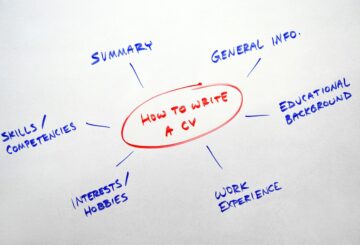
Automation and AI now play a major role in the job search process.
According to Jobscan, 99% of Fortune 500 companies, 66% of large companies and 35% of small-to-medium-sized organizations use applicant tracking systems (ATS) in the hiring process.
Applicant tracking systems quickly assess thousands of applications and identify jobseekers who fulfill predetermined criteria.
With their increasing significance, job seekers need to create an application that can be easily scanned and interpreted using key information. It may well determine if you get an interview or not.
But don’t worry. GoinGlobal has tips and advice when it comes to creating a successful job application in an ATS.
From GoinGlobal’s United States Country Guide: Introduction to Resumés and CVs
Applicant Tracking Systems (ATS)
Automated platforms such as recruiting chatbots, Candidate Relationship Management (CRM) systems and Applicant Tracking Systems (ATS) now play a large role in the hiring process. While CRMs and chatbots are used to find suitable candidates, ATS coordinate the actual application and hiring process. They use keyword-matching algorithms to filter and rank candidates for a position based on the information in their cover letters and resumés. ATS allow employers to swiftly assess thousands of applications and identify jobseekers who satisfy preselected criteria.
According to a survey by career resources platform Jobscan, 99% of Fortune 500 companies, 66% of large companies and 35% of small-to-medium-sized organizations use ATS. It’s therefore crucial to create ATS-friendly applications that can be easily scanned and interpreted.
How an ATS Works
- An employer enters keywords into the system that best describe the open position. These keywords reflect the desired levels of experience, skills and qualifications for the job.
- Using this information, the ATS creates a profile for an ideal candidate.
- It then scans submitted applications for keywords that match this ideal profile.
- The ATS then ranks jobseekers according to the number and relevance of keywords in each application.
- Hiring managers personally review the applications of highly ranked candidates (usually around the top 5%) and select those they wish to interview.
Some Typical Keywords by Industry
Industry
Keywords
Finance
accounting; internal audit; financial reporting; general ledger; GAAP; analytical skills; asset management; underwriting; portfolio management; risk management
Business
RFP (Request for Proposal); Management Information Systems (MIS); client services; consulting experience; leadership development; partnerships; PMP (Project Management Professional); strategic plans
Engineering
process improvement; lean; CAD (Computer-Aided Design); machine learning; mechanical engineering; technical knowledge; prototype; quality assurance; product design; MATLAB
Health Care
nursing; hospital; case management; medical device; pharmaceutical; public health; therapeutic
ICT
.NET; C++; cloud; Android; Python; modeling; networking; Oracle; data collection; front-end; HTML5; information security; troubleshooting; VMware; software engineering; migration; mobile
Marketing/Media
digital media; account management; Adobe; analytical; Microsoft Office Suite; API (Application Programming Interface); branding; marketing materials; client services; social media; cross-functional team; SharePoint; trade shows
Source: Jobscan
It has been estimated that ATS eliminate over 70% of applicants, many of whom are qualified for the job but didn’t tailor their applications for a system that assumes a jobseeker with the most keywords in their application is the best match.
Formatting Your Cover Letter and Resumé/CV for Applicant Tracking Systems
- Read the job description carefully! Use keywords in your resumé/CV and cover letter that match those in the job description.
- Make sure your keywords are incorporated into your resumé/CV and cover letter. Do not just list strings of keywords; hiring managers will penalize a jobseeker whose application includes keywords and industry terms at the expense of clear writing.
- Use both the long-form and acronym versions of keywords (e.g. “Master of Business Administration (MBA)” or “Search Engine Optimization (SEO)”) for maximum searchability.
- Chronological resumé formats work best, listing your work experience from most recent to oldest.
- Use the date format: MM/YYYY (03/2026) or “March 2026.”
- Use basic language and common section headings (Work Experience, Skills, Education…)
- Avoid lines that span across the page as this can scramble text.
- Read the instructions to make sure you are using an acceptable file type: .docx or .pdf formats are safest.
- Avoid unusual fonts, colors or spacing. A common sans serif font such as Arial or Times New Roman is best. Don’t use WordArt.
- Don’t add graphics (except for a photo, if applicable).
- Don’t use headers and footers.
- Avoid using tables and columns. Content may not be read in the order you intended.
- Make sure your name is in the filename of your document (e.g., surname_name_CV.doc).
Learn More
GoinGlobal Career Guides provide the information needed for successful job or internship experiences in the top employment markets around the globe. Our constantly updated, location-specific guides include job search resources, hiring trends, industry overviews, professional and social networking groups, work permit and visa regulations, financial considerations, resume/cv guidelines, interview tips and cultural advice.
Access to GoinGlobal’s resource database is provided through subscribing institutions. Contact your college/university’s career center or library for access instructions.



